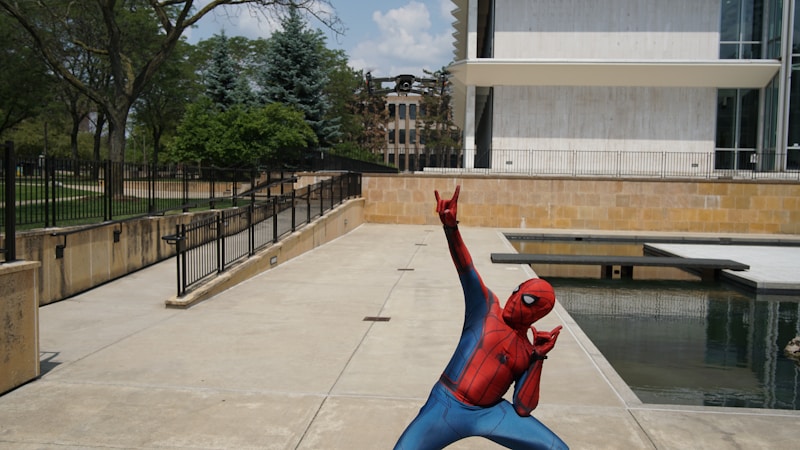Globalization and the Standardization of Wedding Attire: A Cultural Phenomenon
Globalization and the Standardization of Wedding Attire: A Cultural Phenomenon
Understanding Globalization in Wedding Attire
Globalization has profoundly affected various aspects of our lives, including the way we celebrate significant milestones such as weddings. The evolution of wedding attire under globalization trends paints a fascinating picture of cultural exchange, adaptation, and standardization. In this article, we'll explore how globalization has shaped wedding attire across the globe, the implications for cultural identity, and the future landscape of bridal fashion.
The Impact of Globalization on Wedding Attire
Globalization refers to the interconnectedness of the world through trade, communication, and cultural exchange. As countries become more linked, ideas and traditions spread rapidly, often leading to standardization in various fields, including wedding attire.
This standardization can be seen in the following ways:
| Trends | Regions | Characteristics |
| White Wedding Dresses | Western Countries | Symbolizing purity and tradition, popularized by Queen Victoria |
| Destination Weddings | Global | Casual, tropical attire becoming the norm |
| Fusion Wear | India, USA | Combining traditional Indian lehengas with Western suits |
Traditional vs. Globalized Attire
Many cultures have distinct wedding traditions that reflect their values and history. However, as globalization progresses, we see a blending of these traditions with mainstream fashion. For instance, in India, traditional wedding attire like lehengas and sherwanis has begun to incorporate elements from Western styles, leading to the emergence of fusion wedding attire.
This blend often results in a more inclusive approach to fashion, catering to a global audience.  stands as a testament to this trend, showcasing how globalization has made wedding attire more versatile and accessible.
stands as a testament to this trend, showcasing how globalization has made wedding attire more versatile and accessible.
Factors Contributing to the Standardization of Wedding Attire
Several factors contribute to the rise in standardization, including:
- Media Influence: Movies, television, and social media platforms play a crucial role in popularizing certain wedding styles. The visibility of celebrity weddings often dictates trends worldwide.
- Fashion Industry: Global brands like Vera Wang and Pronovias have established a universal language in wedding fashion, making it easier for couples to find a common ground when choosing attire.
- Online Shopping: E-commerce platforms allow couples to access various styles from around the world, further promoting standardization.
Cultural Implications of Standardized Wedding Attire
While standardization provides a broader selection for couples, it may come at a cost. The unique characteristics of traditional attire can sometimes get overshadowed by popular global trends. Here are some cultural implications:
- Loss of Identity: As global styles dominate, traditional attire may be perceived as less fashionable, threatening the cultural identity of certain communities.
- Commercialization: Weddings, a sacred tradition in many cultures, can become overly commercialized, with couples feeling pressured to conform to global trends rather than honoring their heritage.
- Inclusivity vs. Exclusivity: While globalization promotes inclusivity, it can also create exclusivity, where only certain styles and brands become mainstream, alienating those who prefer traditional or local attire.
Future Trends in Wedding Attire
As we move forward, the trend toward globalization and standardization in wedding attire is likely to continue. However, a counter-trend may also emerge where couples seek to embrace and highlight their unique cultural identities. Here are some anticipated developments:
- Customization: In response to standardization, couples may lean toward custom designs that respect traditional elements while infusing modern influences.
- Sustainable Fashion: With increasing awareness of environmental issues, eco-friendly wedding attire that incorporates sustainable materials may gain popularity.
- Diverse Representation: Expect to see more diverse representations of weddings with varied attire reflecting global influences while celebrating local traditions.
Conclusion
The standardization of wedding attire due to globalization presents both opportunities and challenges. As couples navigate their wedding plans, they find themselves at a crossroads—how to honor their cultural heritage while embracing global trends. Striking a balance between traditional values and contemporary influences can create a unique expression of love that resonates with both personal identity and the broader world. Ultimately, it is essential for couples to focus on what their wedding attire means to them and ensure it reflects their values, heritage, and individuality.
As you embark on your wedding journey, consider the significance of the attire you choose. It’s not just about fitting trends but creating memories that resonate for a lifetime. Embrace the global influences but honor your roots, ensuring that your wedding attire tells your story. For those interested in exploring this topic further, consider looking up questions such as: "How has wedding attire evolved in different cultures?" or "What are some unique wedding attire options around the world?"
